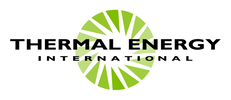|
On November 30, 2016, the European Union’s Commissioner for Climate Actions & Energy, Miguel Arias Cañete, announced the details of a major clean energy package. Front and center in the plan are the EU’s new target of an at least a 30% increase in energy efficiency compared with 1990 levels. That is up from a pre-existing target of 27%.
The strategy is intended to help the EU to become less dependent on energy imports, create jobs and reduce emissions that contribute to climate change. “Europe is on the brink of a clean energy revolution,” Miguel Arias Cañete told a press conference in Brussels. “And, just as we did in Paris, we can only get this right if we work together.” The bloc’s vice president for energy union, Maroš Sefcovic added: “This is really something of a transformational nature that we are proposing – perhaps the biggest since the central power systems were built in Europe.” The commission says that the new package’s benefits include a €177 billion ($252 billion Canadian) mobilization of public and private investment per year in the next decade, which is expected to create as many as 900,000 new green tech jobs and spur a 1% increase in GDP.
2 Comments
Our President and CEO, William Crossland, and a few of our team from Thermal Energy International are participating in the Canadian Energy Efficiency Alliance’s 2016 Day on the Hill: Meetings that Matter, in Ottawa, Ontario. Thermal Energy has also sponsored the event.
The event is an opportunity for Mr. Crossland and our team to meet with government officials and national decision-makers to discuss our energy efficiency solutions and how they help address climate change. Key decision makers attending include:
Thermal Energy Projects Receive Highly Commended Designation at Building Better Healthcare Awards11/11/2016  The combination of our FLU-ACE® heat recovery system and GEM™ steam traps installed at one of the Wrightington, Wigan and Leigh NHS Foundation Trust’s hospitals received the Highly Commended designation for improving sustainability and reducing energy at the 2016 Building Better Healthcare Awards. The FLU-ACE heat recovery system (ordered in January of 2015) works by drawing off the waste gasses from the hospital’s boilers instead of letting it escape up the chimney. These gasses are then put through a unique heat recovery technology that condenses the gasses, releasing all the available energy within them. This means that instead of exhausting to atmosphere at 200°C, which creates a visible “plume” of wasted energy at the boiler house, the hospital can use all the energy and exhaust at 31°C instead, making it 99% efficient. This energy is used on site to heat 20m3 of water for heating, and 6m3 of water for domestic hot water, every hour of the year. This in turn means that the boilers have to do less to keep the same amount of hot water flowing around the hospital, so the amount of natural gas used drops. We had previously installed our GEM steam traps on site. Unlike a conventional mechanical trap, our venturi orifice GEM steam traps enable continuous condensate discharge. Our traps are specifically sized to the application. Therefore the live steam loss through our GEM steam traps is significantly lower than the loss through a conventional mechanical trap. By switching to the GEM steam traps on all of the hospital’s distribution lines and processes, the same amount of hot water is produced whilst reducing steam consumption by 11%. All the new GEM steam traps are covered by a 10-year no-fail guarantee. The Trust was able to fund these projects with Salix funding, where the payments to Salix were less than the savings, meaning the hospital would be cash positive all the way through. The projects were set to reduce the Trust-wide CO2 emissions by 968 tonnes per annum, which is a remarkable 7% reduction on 2010/2011 levels, and also put the Trust firmly on track to over achieve the savings stipulated by the government. Combined, the projects were expected to provide the hospital with annual savings of approximately £170,115, mainly as a result of a reduction in fuel usage, steam savings, and maintenance savings. However, the projects achieved the financial and CO2 savings in the first eight months of the year, meaning the projects have over-performed. Based on the success of these projects, the Trust ordered an extension to the original heat recovery system (which will double its effectiveness on site and add redundancy to all of the plant rooms, making the patient environment more stable and reliable), as well as two heat recovery systems and one GEM system at the Trust’s other two hospitals. Thermal Energy International helps hospitals save money by reducing their fuel bills while also lowering their greenhouse gas emissions. Our proven solutions can increase the efficiency of your heating and steam system to as much as 95% with typical project paybacks (for our combined technologies) within three to five years. >> View case studies About the Building Better Healthcare Awards
The Building Better Healthcare (BBH) Awards are held each year to celebrate innovation and improvement in the built environment, medical devices and people working in the healthcare industry. The BBH Awards is a prestigious event run by Building Better Healthcare, which is an established information portal that provides the healthcare building community with a one-stop service for all the latest news, views, best practices, suppliers and guidance to any aspect of healthcare estates and facilities. The BBH Awards are run annually and attended by over 500 representatives from the NHS and healthcare industry. |
Archives
August 2021
Categories
All
|




 RSS Feed
RSS Feed